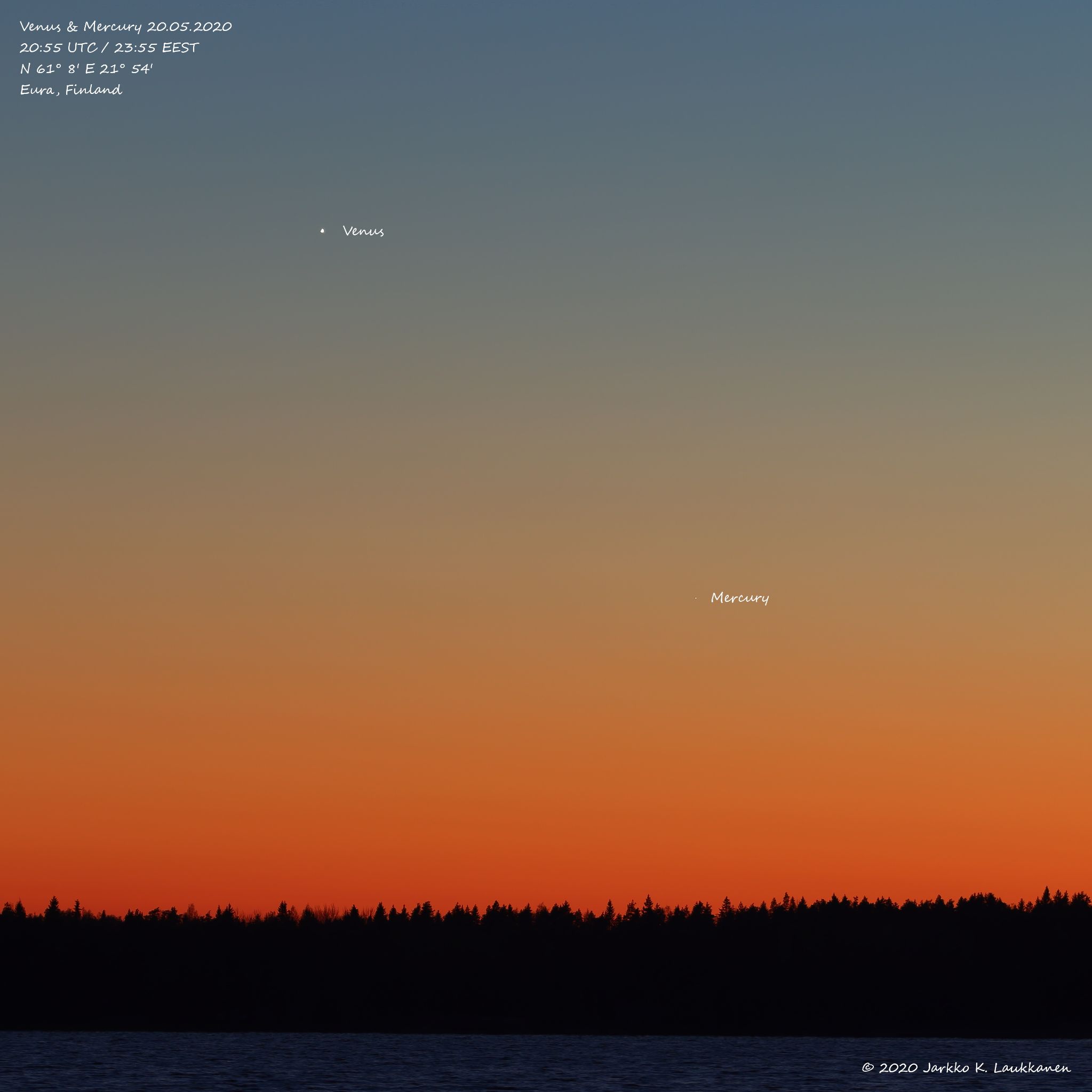EarthSky Community Photos
Submit your photo here. Comment or upvote on photo pages. Search via photographers' names. More improvements coming! To help, please donate.

Eura, Satakunta, Finland
11:55 pm
Canon EOS 77D @ ISO 100, 0.5 sec. Canon EF 70-200 F/4 L @ MF, F/4, 125 mm. Tripod.
Canon DPP: RAW to TIFF conversion. Astra Image: Deconvolution, denoising, curves and levels. GIMP: Annotations.
This is literally midnight - in Finland.
I went to hunt for the inner planets Venus and Mercury to a lake shore nearby, and planned to stay there until 2 am to try to catch comet C/2020 F8 (SWAN), too. The planets have been closing to each other during the last days. Venus was there all the time after the sunset, even with bare eyes. I found Mercury in the sky with binoculars 45 min after the local sunset (at 22:30). However, I could not see it with my own eyes during the whole evening even though it was -0,6 mag. For reference on the lightness of the Nordic summer skies, I could see only one star in the sky around midnight (Arcturus high in the south).
The image was captured at 23:55 local time, about 1½ h after the local sunset, with Canon EOS 77D (ISO 100, 0.5 s) and Canon EF 70-200 F/4 L (MF, F/4, 125 mm). Processing with Canon DPP and Astra Image. At the time of capturing the image Venus was at 5° and Mercury at 2,5°. Sun was at -6,5°, and would be at -8° between 1-2 am. I could just clearly see Mercury in my images. Swan would be at 10°-15°. No processing would give me comet Swan at 6-7 mag in these skies.








